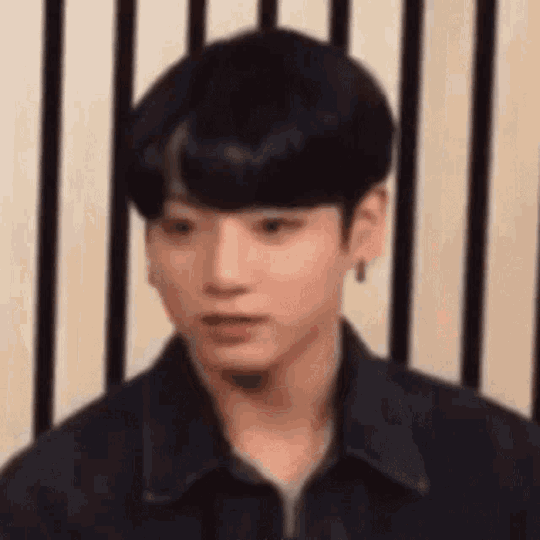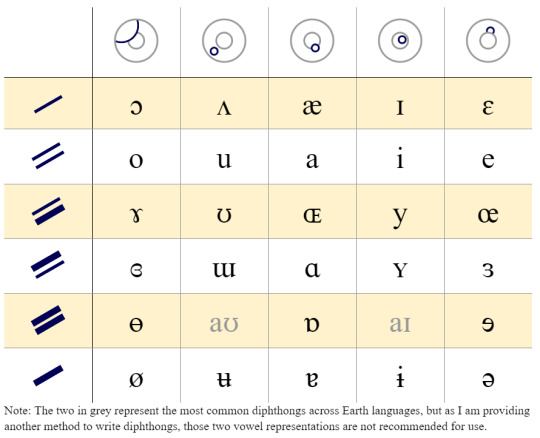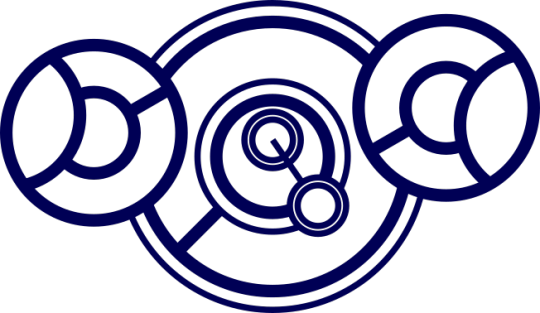#but if it connects to a vowel its an alveolar tap which English has a lot of
Explore tagged Tumblr posts
Note
do you have any tips on sounding more like a native? i feel like i sound dumb with my accent :/
I have an answer. It's a very stupid answer, but it worked for me.

My accent is one of the things I get complimented on the most by Korean people that I talk to, many of them assuming I've spent some time in their country or at least studied there once -- neither of which I have done, but I always feel flattered nonetheless by the compliment.
My secret to perfecting an accent? Well, I did something kind of stupid. Basically, I decided to treat Korean phones (aka sounds) like I was a baby learning them for the first time. Babies repeat sounds that they hear, and they do so through babbling or word repetition. So, I would quite literally just "babble" to myself using Korean sounds. It sounds really strange, but it worked very well. Also, if you do long "sentences", you can practice the intonation flow of the languages as well. The following string of Hangul is complete nonsense. Some of these are real words, some of them are not. This is kind of an example of how I would randomly mutter things to myself to try to practice the sounds and intonation 👍
항두하는지, 모려가서 바빴는데, 그게 뭐, 다시 키나고, 파니를 수작겠습니다...
Now I would NEVER try to pass this off as actual Korean, I know some people say random things to try to convince people that they speak a language, but this is not what I'm doing here! I would just do this to myself at home or during long commutes. This way you're not really exhausting your brain trying to work on phones and sentence structures at the same time. It's just a silly way to use Korean sounds without stressing your mind out too much.
Also, since you're by yourself, it's a judgement free zone. Some people are nervous about speaking in front of people, so you can practice this in the comfort of your own bedroom.
But yes, that was one of my main ways of practicing.
However, my other main way was super normal... it's actually probably how most people practice their accent. Sometimes I would turn on a K-drama or a Korean YouTube video and just listen to them talk and then repeat what they said. Just do that for like an hour, and you'll be surprised by just how much your accent can improve in that short amount of time.
Actually, before I would do recording assignments, I would watch one episode of a K-drama before doing it, because my recording before watching the K-drama and after watching the K-drama was noticeably different.
You just need hear Korean people speaking!

#ask#Korean#한국어#Korean learning#trust guys I know I probably looked stupid but its fine#The accent is hard#But you'll get there#if you really need an articulation guide u can def look up Korean IPA#most of it is similar to English apart from ur voiceless alveolo-palatal affricate (ㅈ) and ㄹ fr#믿어줘 bro#ㄹ has different places of articulation#but if it connects to a vowel its an alveolar tap which English has a lot of#say the word “butter” and u'll prob know what i mean#smooth like butter
24 notes
·
View notes
Text
Introducing: The Linguist's Phonetic Gallifreyan


This is a modification of Brittany G.'s Doctor's Cot Gallifreyan, which reorganized the layout of the Consonants and Vowels tables, adjusted how punctuation works, and added two new mechanics for quality of life. Its full title is The Linguist's Phonetic Gallifreyan, but the shorthand, for lack of a better idea, is GalliPhon. Interested to know the details? Read on!
I started working in Doctor’s Cot a few months ago. It’s interesting, and a fun change of pace from Sherman’s Circular, but it has a few flaws that have really started to dig at me. Firstly, despite the system being made to represent any language, it still is clearly made with English in mind. Nearly all English consonantal sounds are contained in the top left corner of the consonant table. While it does not bother me all that much that the system is made with English as the primary use — I do primarily use Sherman’s Circular, after all — it leads to all the consonants looking samey, and the layout feeling otherwise purely random. In a similar vein, all the English consonants being clustered together led to a lot of indistinguishable consonant pairs. I have dealt with this by leaving lines unconnected on one side, or dots attached to their corresponding circle, but this feels cheap, as Brittany did specify that indistinguishable consonants should be separated into new circles, which I find tedious and aesthetically displeasing. Another problem with the layout is that א’s circle ends up being a pain to make every time I need to write a word that starts with a vowel. For these reasons, I decided to reorganize the charts to have a more logical layout. And, while I was at it, I modified the formulation of punctuation to accommodate more punctuation marks and added two new mechanics to make formulating words less tedious: diphthong bridges and the reversal dot. As a warning, this is NOT a guide to the use of Phonetic Gallifreyan. To learn how to play, I would recommend checking out Brittany’s walkthrough, using my charts instead of the Doctor’s Cot ones.
The Consonant and Vowel Charts
They are now loosely organized based on the IPA categorizations in the 2020 chart. Broadly speaking: a single thin line corresponds to trills, taps, and approximants; double thin lines corresponds to laterals; a thin outer line and thick inner line corresponds to unvoiced fricatives; a thick outer line and thin inner line corresponds to voiced fricatives; double thick lines corresponds to nasals; and a single thick line corresponds to plosives. And for decorations (going from left to right in the chart because they are hard to describe): alveolar, retroflex, postalveolar, dental, “other symbols,” pharyngeal and glottal; labiodental; bilabial; uvular; velar; and palatal. The symbols do not always correspond exactly, but that’s the general organization I worked off of. For the vowels, I went easier on myself and organized them mostly by the English vowels, left-to-right O, U, A, I, and E. Additionally, as there are 28 base IPA vowel sounds but 30 spaces, I included the two most common diphthongs, ai and au. However, as I now have an option to make diphthongs, these are not recommended for use.
Diphthongs
I have added a function that will allow you to have two vowel sounds in a single circle, but only if they are part of a diphthong. Distinct vowel sounds must be in different syllable circles, even if there is no consonant between them. Two vowels in a dipthong, however, may be connected by a diphthong bridge, a line leading from the edge of the first vowel to the middle of the second. An example of both a diphthong and a still separate vowel can be seen in Ohio: /oˈhaɪ o/

Vowel/Consonant Reversal
The other function I am adding is the reversal dot, necessitated by how annoying it is that words like “is,” “and,” and “or,” require two circles despite their simplicity. So, in Phonetic Gallifreyan, you can add a filled dot to the center of a word circle to indicate it should be read vowel first. Consonants still go outer circle first, then inner circle. As an example: “and” /ænd/

Punctuation
The primary change is that they don’t consist of two circles, just one. This way, a limited pool of punctuation can be combined to create more punctuation, like combining a period and a comma to make a semicolon, or three periods to make an ellipsis, or even some rarer punctuation like the interrobang (‽)

Credit to Brittany G. for the basis, and to Wikipedia and Phoible for research on IPA, punctuation, and more.
#UPDATED MARCH 27 2023#if you are translating any GalliPhon posted before this date you will get ɤ where ʊ was intended#the ʊ ɯ and ɤ vowels have been moved (essentially clockwise)#(mainly bc I was getting annoyed at how much space the oʊ dipthong took up)#also apologies for how terrible this all looks#unlike Brittany I am far from being a graphic designer#GalliPhon#gallifreyan#doctor who#The Linguist#conlang
252 notes
·
View notes
Text
Who's Who (And: how do you spell that?)
This is the first of what will (hopefully) be fortnightly updates on one of the D&D games I”m running. Because session logging turned out so well last time, and I really should get around to doing it again now. This first post got really long by the time I was done introductions, so I'm separating it out and posting the first actual account later.
Before I begin telling our story, I’d like to introduce the player characters (And some pertinent setting details). Before I can do that, though, I need to discuss spelling – transcription, rather – conventions. Largely at my players’ urging, (Though they might be regretting that now) I did some rudimentary conlanging for the setting. While I have not yet developed any scripts for these languages, when I asked VulgarLang to give me vocabulary, it was kind enough to also give me phonological rules for each language. Sometimes rather a lot of them. This means that some of the spelling is, if not irregular, somewhat unintuitive. Add to that the fact that there are some sounds simply not heard in English, and you have a few difficulties. So, what I intend to do is this: Whenever a name is introduced for the first time, I will include a phonetic transcription if the pronunciation is not obvious. After that, I will simply write the name as it is spelled in the Vulgar output and my notes. If you don’t care about pronouncing names right in your head, skip the next paragraph.
While I will give the phonetic transcriptions in proper IPA, I do not want to go through the hassle of installing and learning an IPA keyboard, nor do I particularly wish to copy-paste IPA characters more than ~once per name. So, outside of the phonetic transcriptions I will be using the following spelling conventions: Nasalized vowels – which are fairly common in Ohi – will be marked with a tilde, long vowels will be denoted by repeating the vowel character, â will be used for [æ]. “gg” will be used for the glottal trill, [ʀ] “rr” for the alveolar trill [r], and “r” for both the alveolar approximant [ɹ] and the alveolar tap [ɾ] because in-universe the only people who bother to distinguish them are extremely pedantic elves; Both are used in older dialects of Raxak [ɾaxak] (elvish), but nowadays most people treat the sounds as if equivalent. The combination “th” will be used for the voiceless dental fricative, even though in Ohi “th” (pronounced as separate consonants) is a valid cluster; in a probably fruitless attempt to minimize confusion I will write the latter as “t’h”. “sh” will denote the postalveolar fricative, and “x” the velar fricative. Also, Raxak names are whispered when spoken by elves or people sufficiently enamored with elves (*cough* @theunitofcaring *cough*) to be stubborn about precisely correct pronunciation. A generally safe assumption is that the names of elves are correctly pronounced whispered, and that all other names are generally voiced.
To understand the characters, you will need to know a few things about the world. Orcs and Elves are variants on humans, descended from tribes that were taken from the world at a time when the boundaries between the planes were thin. When they returned to the world, centuries later, they found themselves physically transformed by their experiences; the gross physical changes are of little consequence for the moment, apart from the effects on their fertility: though each kind remains fertile, they are no longer interfertile with each other, and their children with unaltered humans are themselves sterile. The inability for a cross-race union to produce a fertile heir has shaped the customs of all three races, especially among the nobility of each. A married noble couple generally has a shared set of concubines of different races – sometimes infertile halfbreeds who will produce no children at all, but more often other-race purebloods. The couple’s children by their concubines are valuable, trusted family members who, in theory, are unlikely to scheme against their parents or siblings due to their absolute inability to legally inherit. With that explanation out of the way, on to the PCs themselves:
Thiet of Ishto Theit is a half-orc who embraced the role his parents had planned for him as a member of the clergy. He eagerly and earnestly devoted himself to the worship of Ggita [ʀita], the god of knowledge and of the Sun, and was rewarded with His blessing and a limited ability to directly call upon His aid. Unfortunately for him, Thiet ran afoul of church politics – specifically, he unknowingly made an enemy of the full-blooded scion of a more influential noble house, and was quietly shuffled off and discouraged from further pursuing a church career. Not knowing the true reasons for his dismissal, he concluded that his faith must have lapsed and set off in search of some sort of righteous task to prove his faith.
Erkad [eɾkad] of Ishto Thiet’s brother Erkad followed the other traditional path for halfbreed children: Going to special schools to learn to command and lead the family’s personal armsmen. Of course, personal martial skill was valued as highly as an understanding of tactics or inspiring speeches, and so as a crowning accomplishment before graduation, Erkad was tasked with completing some sufficiently heroic deed. When his brother mentioned his own self-imposed quest, Erkad saw a perfect opportunity to kill two birds with one stone.
Ksea of Shuu Ksea grew up loving children. She would never have any of her own, being half-elf, but she helped raise her younger siblings. When her younger sister came of age, her parents arranged a marital alliance between house Shuu and house Ishto. To sweeten the deal for the higher-ranked and more prestigious Ishto, Ksea was included as a part of her sister’s dowry, to act as a nanny and caretaker to her sister’s children. She did this gladly, growing quite fond of the kids and picking up a bit of magical talent in the meantime. When her nephews Erkad and Thiet, now fully-grown, asked for her help on some damn fool hormone-driven quest for holy relics or something, she agreed to come along, if only to keep an eye on them.
Ero [eɾo] Ero is an example of a rather rare phenomenon in this nation: an actual bastard. To be precise, she is the bastard daughter of the king-consort. Now, the king is obviously not a bright man – he cheated on the queen, and, what’s more, he did it with another human – and he was compassionate enough not to have the evidence of his poor life choices killed or abandoned, so he hatched a… cunning… plan to hide the evidence of his folly. He claimed that the child was the bastard of one of the orc men in the royal harem, then contacted an alchemist to make this story more plausible. The alchemist devised a potion, which Ero was raised to believe was essential medicine for a life-threatening medical condition. The potion drained her of color, giving her the superficial characteristics of a half-orc, which served to prop up the lie for a decade or so before it was bowled over by pubescent hormones. Specifically, Ero found herself pregnant, which should have been quite impossible for a half-orc. After suffering a miscarriage, Ero fled the capital, seeking to meet up with her academy friend Erkad and get away from the city long enough to resolve her identity crisis.
Sothet [hoθet] of Thâthikis [θæθikit] (Raxak name) Sothet’s human parent was given away in an attempt by their family in to solidify an alliance with the more prestigious elven House Thâthikis. For all her life, Sothet has been aware that she exists only because of that now deteriorating alliance. With her parent’s status in the family perilously unstable, Sothet was never trusted with real responsibility in the way that halfbreeds usually are. This left her relatively free to pursue her own path in life, while still being able to draw on family connections. Sothet chose to express that freedom by studying various magical arts, primarily taking up wizardly magic but also for a time attending seminary alongside Thiet to learn as much as possible about miracles. Growing increasingly displeased with both her parents, as well as the system that put them together, she focused her studies on one goal: Having a child, and in doing so turning the political system grounded in halfbreed infertility on its head. When she heard about the half-orc Ero’s miscarriage, she thought she had found the key – or at least part of them – to the puzzle, and so arranged to join her friend Thiet’s expedition in order to get close to Ero and learn her secret.
4 notes
·
View notes